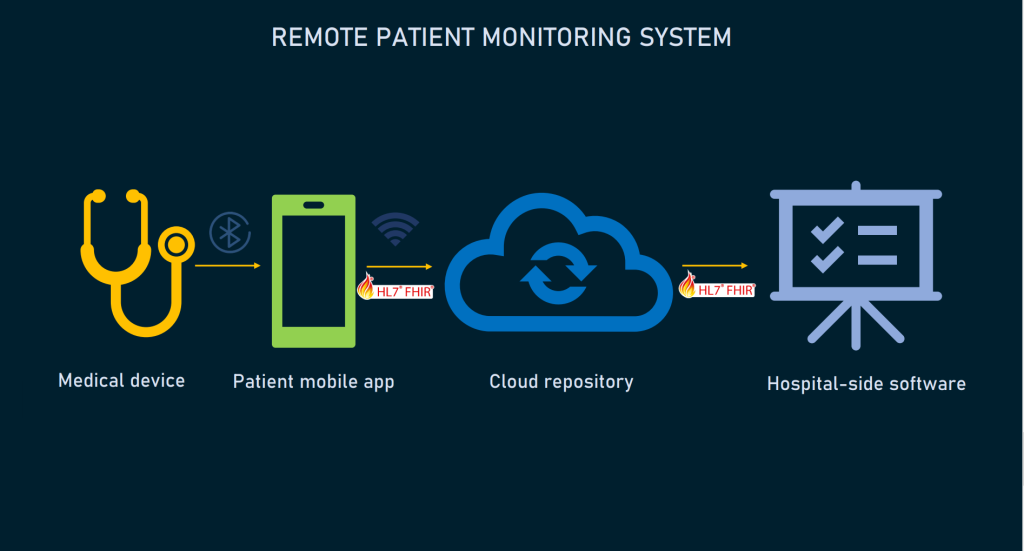
The field of healthcare is undergoing a transformative shift with the integration of remote patient monitoring (RPM) technology. This innovation holds the potential to revolutionize patient care by enabling medical professionals to monitor patients’ health conditions remotely. In this article, we’ll explore the remarkable advancements in remote patient monitoring technology and their impact on healthcare delivery.

1. Introduction to Remote Patient Monitoring
Remote patient monitoring involves the use of wearable devices, sensors, and digital health platforms to collect and transmit patients’ physiological data to healthcare providers. This data includes vital signs, activity levels, medication adherence, and more.
2. Wearable Devices and Sensors
Wearable devices equipped with sensors, such as smartwatches, fitness trackers, and wireless monitors, allow patients to track their health metrics in real-time. These devices can provide insights into heart rate, blood pressure, glucose levels, and even respiratory data.
3. Chronic Disease Management
RPM has proven particularly effective in managing chronic conditions such as diabetes, hypertension, and heart disease. Patients can monitor their conditions more closely, and healthcare providers can intervene proactively when irregularities are detected.
4. Early Detection and Prevention
RPM technology facilitates early detection of potential health issues. By continuously monitoring patients’ data, healthcare professionals can identify trends or anomalies that might indicate a deterioration in health, allowing for timely interventions.
5. Post-Operative and Recovery Monitoring
Following surgical procedures, RPM allows healthcare providers to remotely monitor patients during their recovery phase. This minimizes the need for frequent hospital visits, reduces complications, and enhances patient comfort.
6. Remote Consultations and Telehealth
RPM goes hand-in-hand with telehealth services, enabling remote consultations between patients and healthcare providers. Medical professionals can assess patients’ conditions, adjust treatment plans, and provide guidance without requiring in-person visits.
7. Data Analysis and AI Integration
The massive amounts of data collected through RPM can be analyzed using artificial intelligence (AI) algorithms. AI-powered systems can detect patterns, predict deteriorations, and offer personalized recommendations for patients and healthcare providers.
8. Improved Patient Engagement
RPM empowers patients to take an active role in their healthcare by giving them access to their health data. This increased engagement can lead to better self-management, adherence to treatment plans, and improved outcomes.
9. Reducing Healthcare Costs
RPM has the potential to reduce healthcare costs by preventing hospital readmissions, minimizing emergency room visits, and managing chronic conditions more effectively.
10. Challenges and Future Directions
Despite its potential, RPM also faces challenges such as data security, privacy concerns, and the need for standardized practices. As technology continues to advance, addressing these challenges will be crucial for realizing the full potential of RPM.
Conclusion
Remote patient monitoring technology is ushering in a new era of patient-centric healthcare. By enabling continuous monitoring, timely interventions, and enhanced patient engagement, RPM is transforming the way healthcare is delivered. As this technology continues to evolve, its role in preventive care, chronic disease management, and post-operative recovery is becoming increasingly vital. At [Your Company Name], we’re committed to staying at the forefront of remote patient monitoring advancements, providing cutting-edge solutions that contribute to improved patient outcomes and enhanced healthcare experiences. Contact us to explore the possibilities of integrating RPM technology into your practice.
